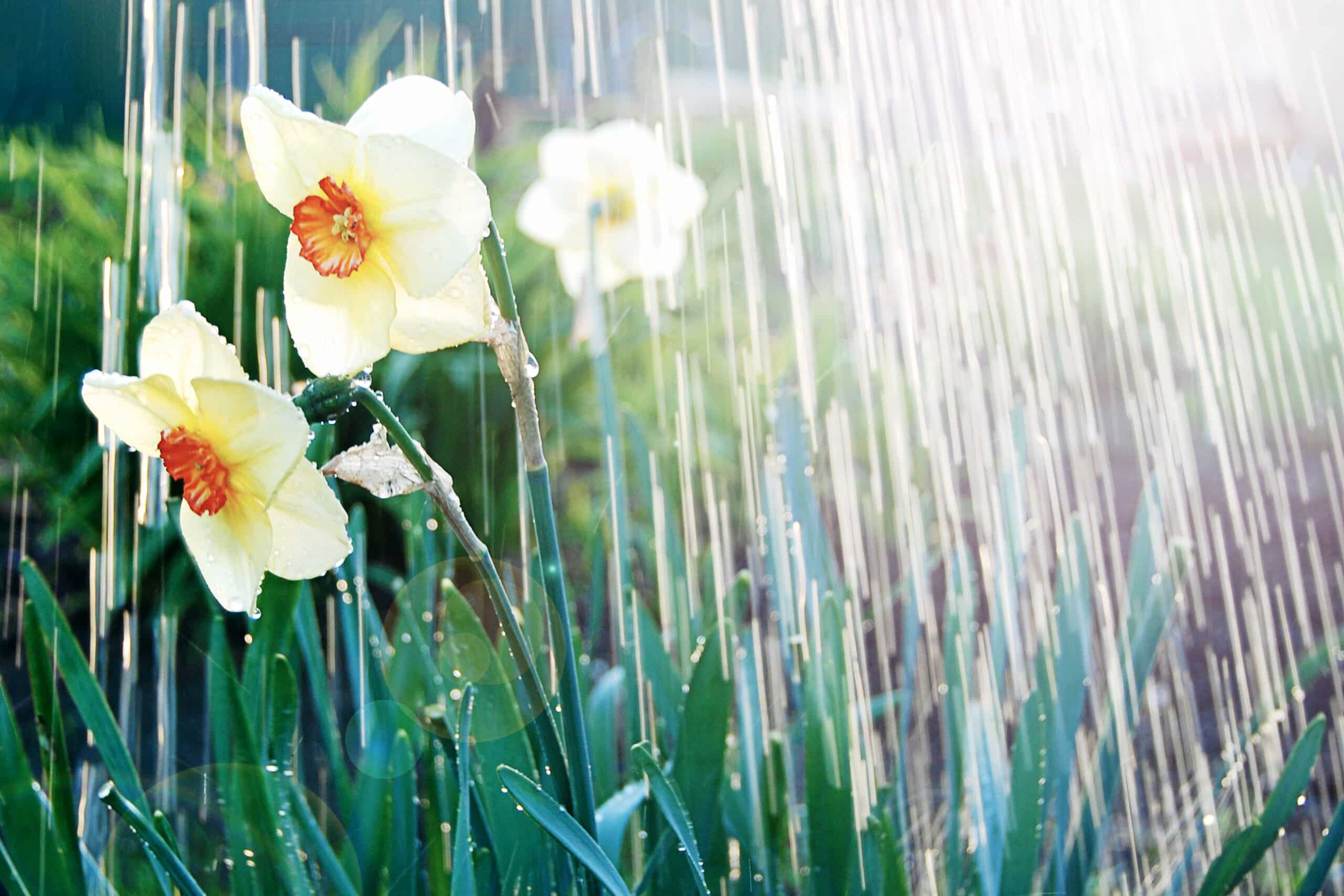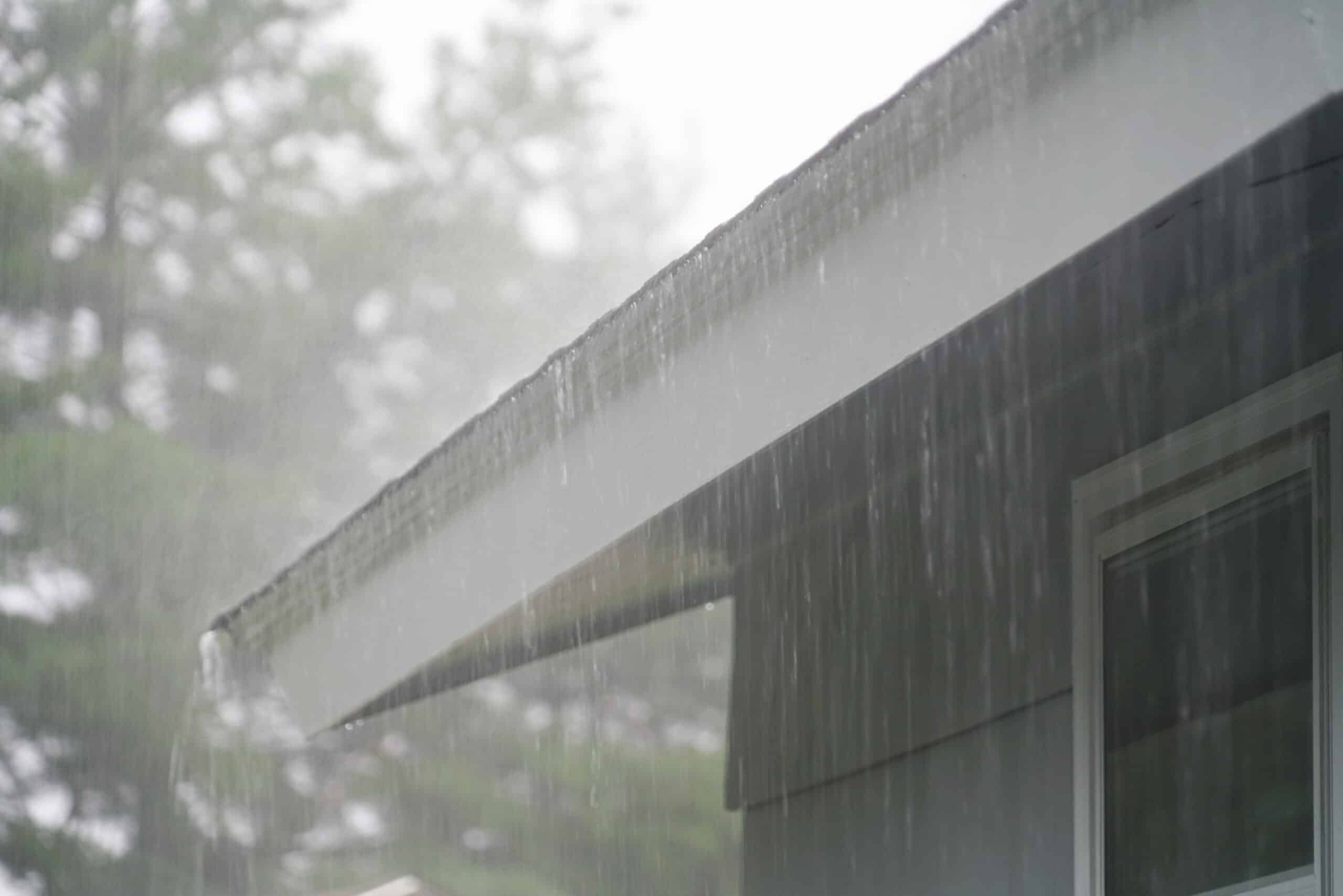
Everyone knows the saying that April showers bring May flowers. But how many people think about April showers bringing problems in and around their home? The answer is probably not many until they are facing down a flooded basement or a leaking roof. The reality is water damage is the most common and most expensive problem for homeowners. The good news is that there are several things you can do to make your home more prepared for the heavier spring rains.
First, leaves and other debris should be removed from your gutters. This is usually emphasized heavily in the fall, but the spring is also an excellent time to clear gutters. Gutters should discharge away from your house as Spring brings extra rain. You do not want the water finding its way into your home.
While you are on your roof, check for any loose or missing shingles. This will lead to water leaks over time. This is also a great opportunity to examine your facia and trim for any signs of deterioration. Exposure can lead to wood rot and access points for water, pests, and vermin.
If you burned firewood during the winter months, now is a perfect time to clean out that firebox and ash dump and close the chimney damper. It’s an easy thing to forget about and your air conditioning will bleed from the chimney all summer if left open. Not to mention you don’t want to wake up with a bat in the house! If you stacked firewood in the garage or against the side of the house, this should be removed and relocated away from the house.

Gutters, downspouts, and home drainage are a very important part of keeping moisture away from your home. Once you have fully cleaned the gutters and made sure nothing is blocking the downspouts, you can do the same cleaning on your underground runoffs with pop-ups. Last fall’s leaves and newly rooting grass will clog a pop-up drain quickly. You also want to ensure the gutters haven’t sagged from ice or have been damaged over the winter. Splices in the gutters and corners should be checked for leaks to prevent a drip spot. Your gutters should also be pitched towards your downspouts to prevent standing water in the gutters.
Many people also choose to replenish mulch in their flowerbeds. Mulch can make your beds look beautiful, but just remember that mulch against your home creates a high moisture area against your home that is a perfect environment for mold growth and pests, especially termites. They start by eating the mulch and then find their way into the wood framing. Even though the rock is typically more expensive upfront, it does not need to be replaced every year and it deters pests from entering your home. If you’re not going to re-mulch this spring, you still want to clean out any dead leaves and debris that built up over winter.
When getting hoses out for the start of spring, you will want to hook them up and ensure they or the faucet itself does not leak when turned on. A faucet left on that drips is also a prime spot for those pesky termites to start a nest. If you find that your spigot does have a leak at the handle or at the hose, you can purchase a new hose gasket or an o-ring kit and any local hardware store. In most cases, they are both an easy DIY repair.
Because water can cause so much damage in and around your home, it is important to properly maintain areas where water issues can become costly. The upside is that many of the things you can do are cost-effective and will help manage the heavy rains in the spring. Cleaning and clearing areas where water needs to go, proper grading, and home maintenance are all simple things you can do to keep the water flowing in the proper direction!
